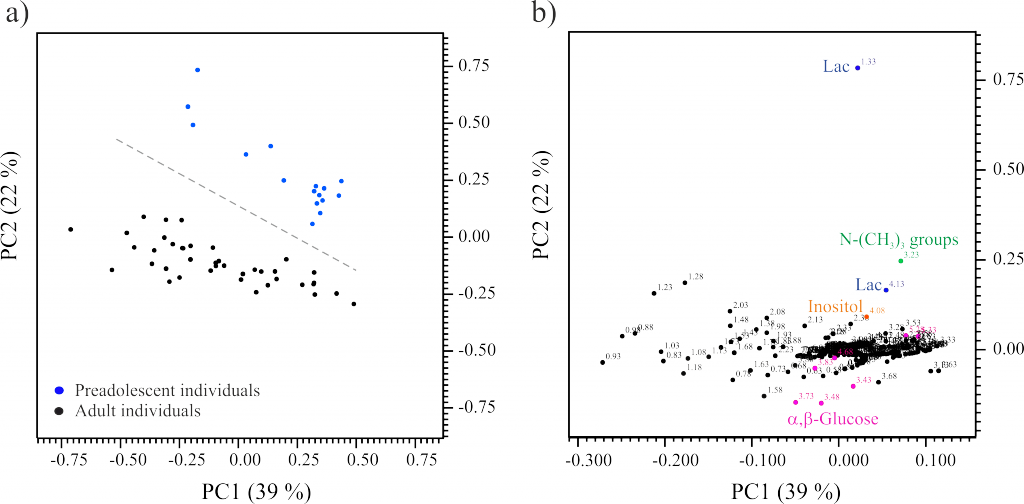Dolors Izquierdo, Montserrat Roura, Míriam Pérez-Trujillo, Sandra Soto-Heras, María-Teresa Paramio
International Journal of Molecular Sciences 2022, 23(8), 4141
Abstract
In goats, embryo oocyte competence is affected by follicle size regardless the age of the females. In previous studies we have found differences in blastocyst development between oocytes coming of small (<3 mm) and large follicles (>3 mm) in prepubertal (1–2 months-old) goats. Oocyte competence and Follicular Fluid (FF) composition changes throughout follicle growth. The aim of this study was to analyze Fatty Acids (FAs) composition and metabolomic profiles of FF recovered from small and large follicles of prepubertal goats and follicles of adult goats. FAs were analyzed by chromatography and metabolites by 1H-Nuclear Magnetic Resonance (1H-NMR) Spectrometry. The results showed important differences between adult and prepubertal follicles: (a) the presence of α,β-glucose in adult and no detection in prepubertal; (b) lactate, -N-(CH3)3 groups and inositol were higher in prepubertal (c) the percentage of Linolenic Acid, Total Saturated Fatty Acids and n-3 PUFAs were higher in adults; and (d) the percentage of Linoleic Acid, total MUFAs, PUFAs, n-6 PUFAs and n-6 PUFAs: n-3 PUFAs ratio were higher in prepubertal goats. Not significant differences were found in follicle size of prepubertal goats, despite the differences in oocyte competence for in vitro embryo production.
Representative 1H NMR spectra of follicular fluid samples of (a) adult and (b) prepubertal goats. Spectra were acquired at 298.0 K and at a magnetic field of 600 MHz, with suppression of the residual water signal.
(a) PCA scores plot (PC1-PC2) from 1H NMR spectral data of follicular fluid samples of prepubertal (n = 16; blue dots) and adult (n = 40; black dots) goats. (b) PCA heat map loadings plot (PC1-PC2) with some discriminant variables assigned.



